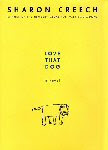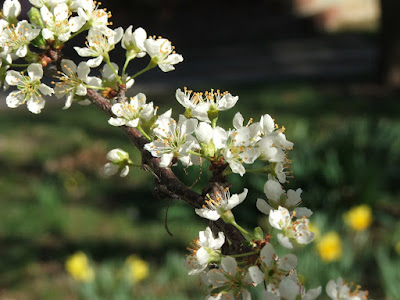Friday, March 30, 2007
Poetry Magazine
Here is a poetry magazine project that can be helpful for all grade levels. I chose mine for high school and middle school, but all levels apply.
Wednesday, March 28, 2007
The Collected Poems by Theodore Roethke
 Poetry Break 5: A poem with a refrain or chorus
Poetry Break 5: A poem with a refrain or chorusIntroduction: Teach students about refrain by analyzing song lyrics. Afterwards, students are to read "The Waking" and identify refrain in the poem.
Book: The Collected Poems by Theodore Roethke
Author: Theodore Roethke
Published: 1974
"The Waking"
by Theodore Roethke
I wake to sleep and take my waking slow.
I feel my fate in what I cannot fear.
I learn by going where I have to go. (refrain)
We think by feeling. What is there to know?
I hear my being dance from ear to ear.
I wake to sleep and take my waking slow. (refrain)
Of those so close beside me, which are you?
God bless the Ground! I shall walk softly there,
And learn by going where I have to go. (refrain)
Light takes the Tree; but who can tell us how?
The lowly worm climbs up a winding stair;
I wake to sleep and take my waking slow. (refrain)
Great Nature has another thing to do
To you and me; so take the lively air,
And, lovely, learn by going where to go. (refrain)
This shaking keeps me steady. I should know.
What falls away is always. And is near.
I wake to sleep, and take my waking slow. (refrain)
I learn by going where I have to go. (refrain)
Extension: Have students create their own poem using a chorus or refrain. Students will present their work in front of the class in their own creative way. Some students can rap their poem, some can work in pairs and play an instrument while singing their poem, while others can read it with voice and emotion to the class.
Saturday, March 17, 2007
Thursday, March 8, 2007
"Spring" by Francisco X. Alarcón
 Poetry Break 4: Spring Poetry.
Poetry Break 4: Spring Poetry.Introduction: Student will learn personification and imagery by utilizing magazine photos and describing them in detail.
Teacher will teach personification by reading the following poem by Francisco X. Alarcón.
Book: Laughing Tomatoes and Other Spring Poems
Author: Francisco X. Alarcón
Published: 1997
"Spring"
by Francisco X. Alarcón
The hills
are starting
to crack
a green smile
once again
Extension:
After reading "Spring" with the class, students will gather photographs of images that represent a season from magazine stacks in the classroom. Students will not reveal the identity of the season they chose. Using five sheets of cardstock paper, students will create a poetry book. They are to paste the photograph images onto their book pages and write a poem for each image using details. This will help students understand imagery. Students will also include personification in their poetry.
Once their work is complete, they will present it to the class by reading one poem and allowing the class to guess which season they wrote about. Each individual student will reveal their season after the class has agreed on an answer.
Thursday, March 1, 2007
Love that Dog by Sharon Creech
 Creech, Sharon. Love that Dog. New York, NY. HarperTrophy. 2003.
Creech, Sharon. Love that Dog. New York, NY. HarperTrophy. 2003.A novel written in free verse, Sharon Creech's Love that Dog is an inspirational and emotional novel that takes the reader from happy events all the way to sad situations that may cause the reader to shed a tear or two.
Creech's novel is created to demonstrate one boy's fear and even hate of poetry. This boy named Jack has such a dislike for poetry, that he determines at one point that it is not for him.
If it was not for Miss Strechberry, Jack would have never been exposed to poets such as Walter Dean Myers and Robert Frost. This causes Jack to see poetry different from being useless. He learns to craft words into emotions and emotions into words.
Jack writes to his favorite poet, Walter Dean Myers, who wrote Love that Boy and later receives a visit from the author himself.
Through his journey with verse, he learns to cope with issues that life gives him such as the death of his beloved bestfriend, his dog Sky. Jack, after reading Love that Boy and meeting the author, writes a tribute poem for Sky and calls it Love that Dog. He is finally able, through poetry, to admit to himself that his loved pet is gone.

After admitting defeat and accepting reality, Jack undergoes a transformation from a young poetry-hating boy in denial to a young man who learns to release love and emotion on a blank piece of paper, and loving every verse.
Subscribe to:
Posts (Atom)


